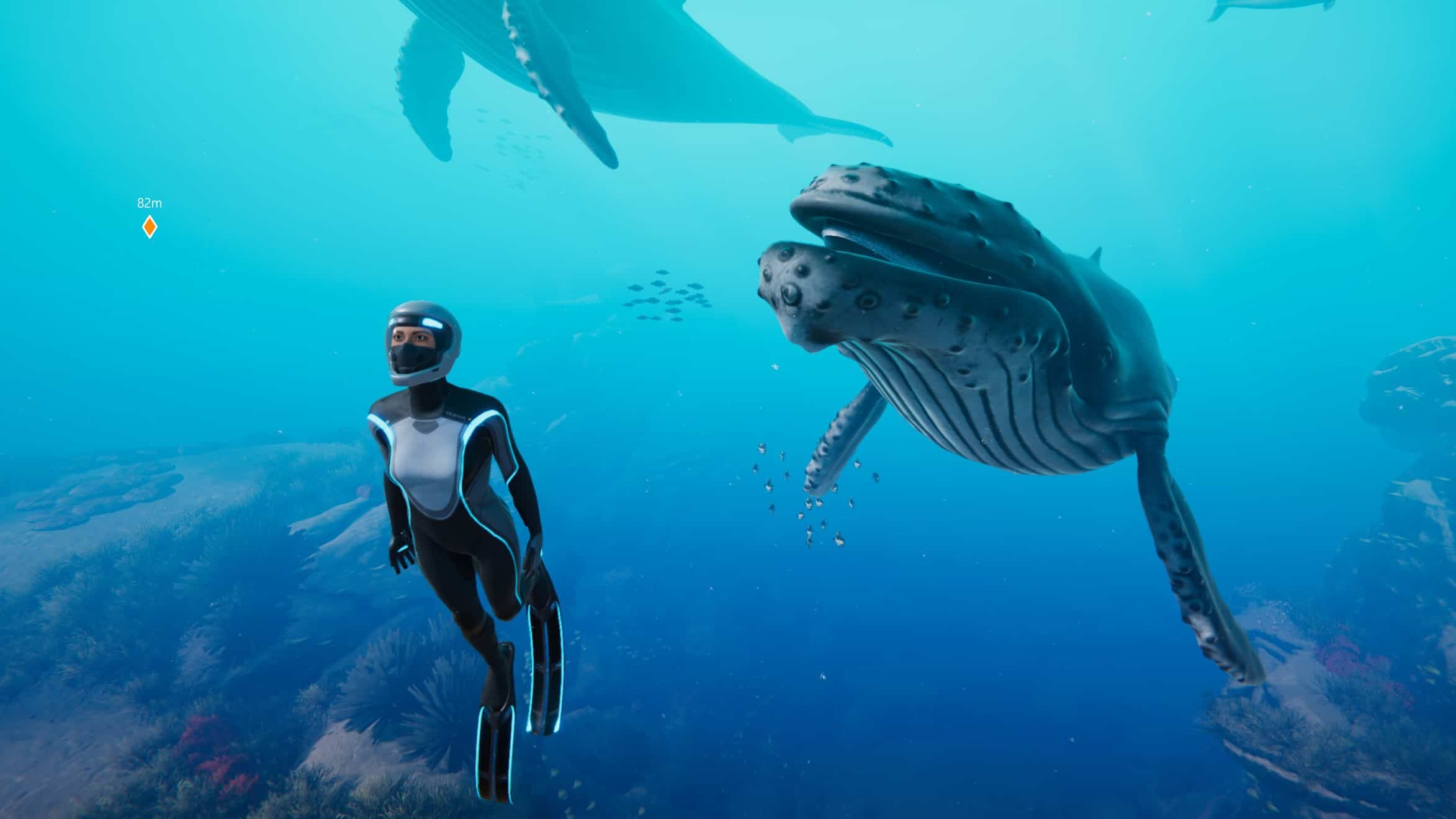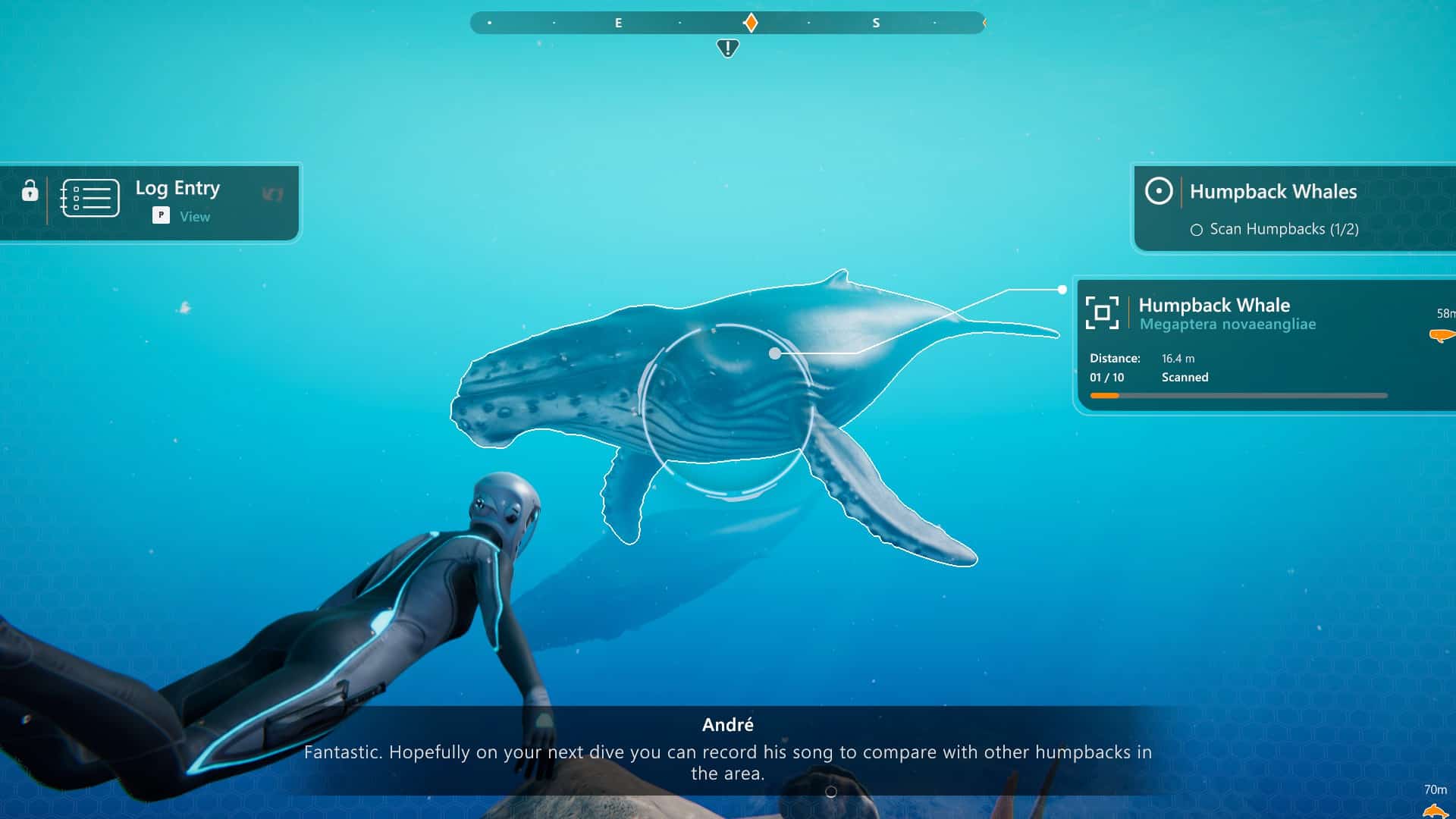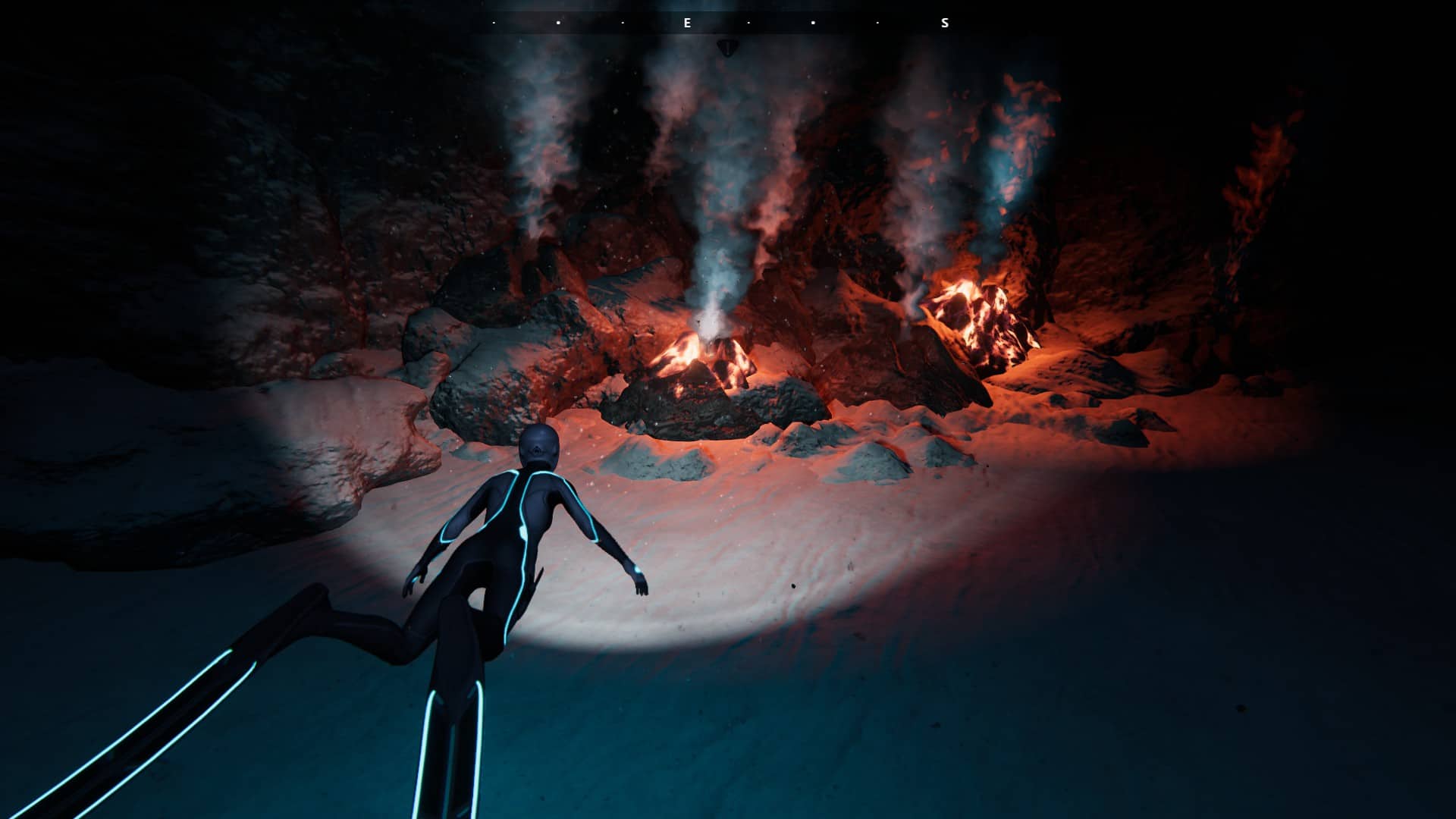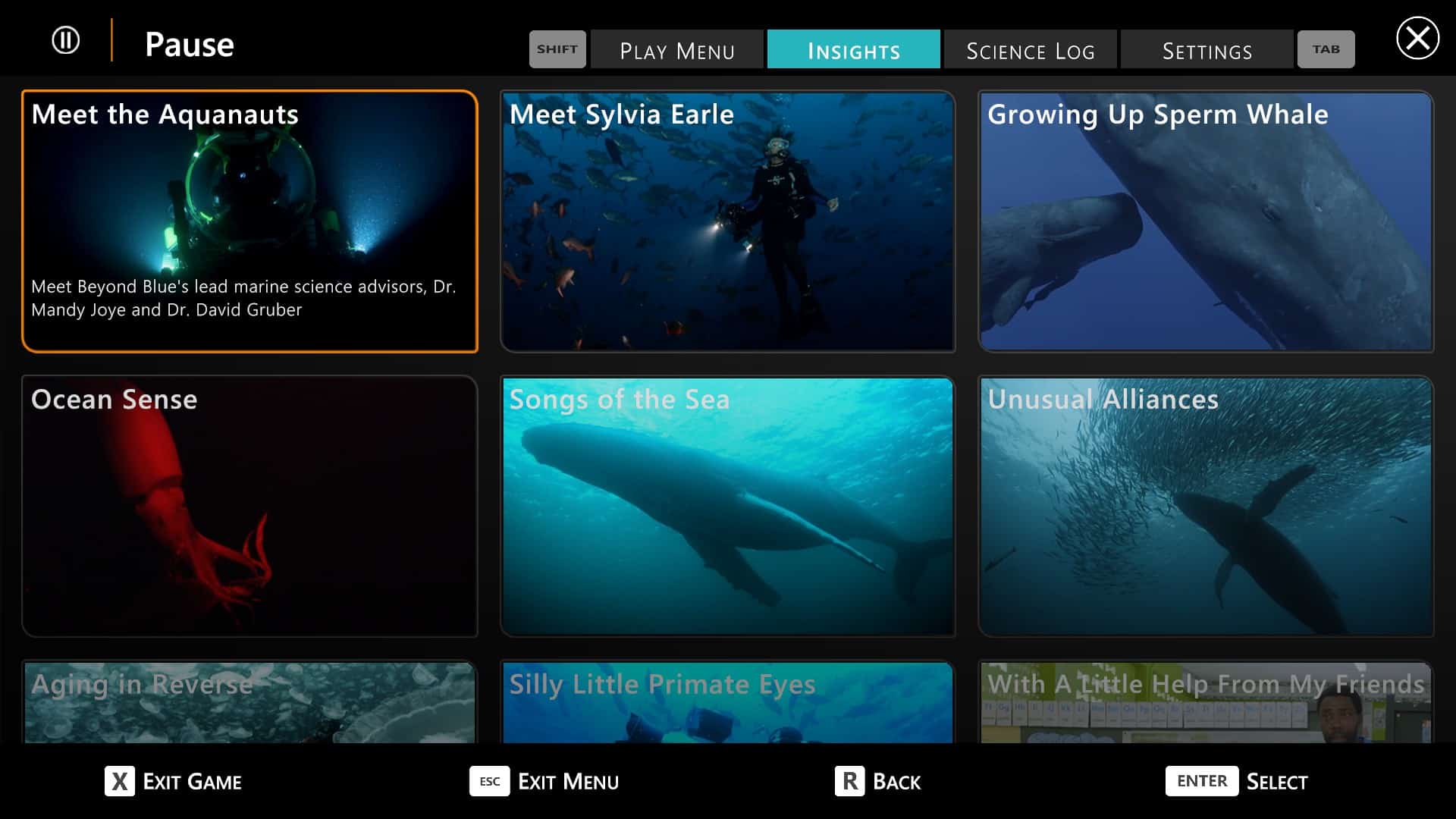
What is it? A third person underwater diving sim inspired by the Planet Earth documentaries
Expect to pay $20 /£16
Developer E-Line Media
Publisher E-Line Media
Reviewed on i5-2500K, 8GB RAM, GTX 670
Multiplayer No
Link Official site
When there’s a squad of field experts on a game’s development team, I always feel like I’m in safe hands. Beyond Blue’s inclusive development process—involving scientists, marine biologists, and a close partnership with the BBC’s Blue Planet II crew—made me excited to learn more about the mysteries and perils of our planet’s oceans. Games that aspire to both entertain and educate need to have a balance of genuine learning and engaging storytelling, and although Beyond Blue sails with the former, it flounders with the later.
Beyond Blue is a third-person diving simulator that plunges you into the calm blues of the Western Pacific ocean. You slip into the soggy flippers of Mirai, a marine biologist who is tracking a pod of whales whilst documenting various underwater creatures. Alongside a small team of scientists, Mirai studies the family of whales, recording their songs and watching their behaviour in hope of furthering her research into these giants of the sea.
Beyond Blue is split into eight separate dives, acting as watery chapters for the overall story. Each dive begins with you swimming to an electronic buoy that pinpoints underwater creatures for you to find and scan. Futuristic technology allows Mirai to dive effortlessly through the water and, even with the clunkiest keyboard and mouse, gliding feels smooth and satisfying.

Each dive is in a different atmospheric pocket of the ocean. There are waypoints that progress the story but you’re free to explore the impressively realistic environments at your own leisure. When you find the pinpointed creature, you can use a small drone to have a close-up look to examine and record their markings. Although you’ll come face-to-face with giant sperm whales, hammerhead sharks, and alienesque squids, there’s no imminent danger—it’s a relatively peaceful game.
Mirai and her team livestream the dives online, so there’s an ongoing conversation about what certain fish are, and why the team makes certain decisions. Although it felt a little performative for the sake of the livestream, I really liked the on-going explanation about what I was doing and why, making my documenting and scanning more than mindless busywork.
When you’re done with a dive you return to a small submarine that acts as a home base. Creatures you have scanned get entered into a database featuring some light information about each species. The sub is also an opportunity to chat with Mirai’s colleagues and make phone calls back home to her family. The game follows the same cycle: return to the sub, talk about findings, go diving, return to the sub, talk about findings, go diving. It’s pretty repetitive, but the scan information and mini-documentaries you find on the submarine’s tablet help somewhat to break up the rhythm.

Murky waters
The environments wildly vary in terms of successfully capturing the wonder of the sea. One level plunges you into an interconnected system of deep-sea trenches with no map, leaving you to explore its rocky corridors with exciting trepidation. But then, another level was just a blue haze of open ocean with nothing in sight. I understand that open water is an integral layer of the ocean, but dedicating a whole dive to essentially an empty space left me a little disappointed, especially as there’s only a handful of chapters.
One level plunges you into an interconnected system of deep-sea trenches with no map, leaving you to explore its rocky corridors with exciting trepidation.
Unfortunately, many of Beyond Blue’s dives feel a little uninspired. Although its ocean is more realistic than Abzu’s magical dream-world and Subnautica’s alien planet, even it’s most active environments felt empty. It never felt like the ocean was teeming with life.
There are some artful moments but both its environments and storytelling stay one-note throughout the three hour run time, with several plotlines gasping for space to breathe. It briefly touches upon the devastating effects of deep-sea mining and how certain pollutants are making the sea a toxic environment for wildlife, but then quickly moves on. There’s even a storyline about Mirai’s grandmother having Alzheimer’s disease, but it never goes anywhere. You can feel the good intentions of the game through its dedication to realism and its creature database, but it’s muddied by lacklustre storytelling. The beating heart of Beyond Blue lies within the game’s mini-documentary videos.

As you progress through Beyond Blue’s chapters you begin to unlock videos that provide insightful information about the state of the Earth’s oceans. These offer an eye-opening perspective on climate change and our attitude towards the planet, and give expert insight into the places and species seen in the game. The biologists and scientists who lend their voices these clips are passionate about studying and saving our vibrant oceans, and it’s unfortunate that the sentiment of the videos doesn’t translate into the game.
E-line Media’s previous adventure game, Never Alone, was brilliant in presenting the histories, stories and life lessons of Alaska Natives through both the same type of documentary videos coupled with a story that emotionally engages. Beyond Blue is the perfect game to tackle the important issues its videos present, but doesn’t delve deep enough to drive those ideas home.
Although some of the environmental messages are lost, the act scanning Beyond Blue’s creatures and exploring its realistic environments makes for a brilliant educational tool. Its chapters feel like a collection of calm, interactive lectures rather than a passionate plea for action—and that’s far from being a bad thing.
Read our review policy
A calm and realistic marine-diving simulator that unfortunately never goes deeper than the surface.





More Stories
Firefighting Simulator – The Squad review — Through the fire and the shame
Maid of Sker review — Death in the slow lane
PHOGS! review – It’s a dog-help-dog world out there